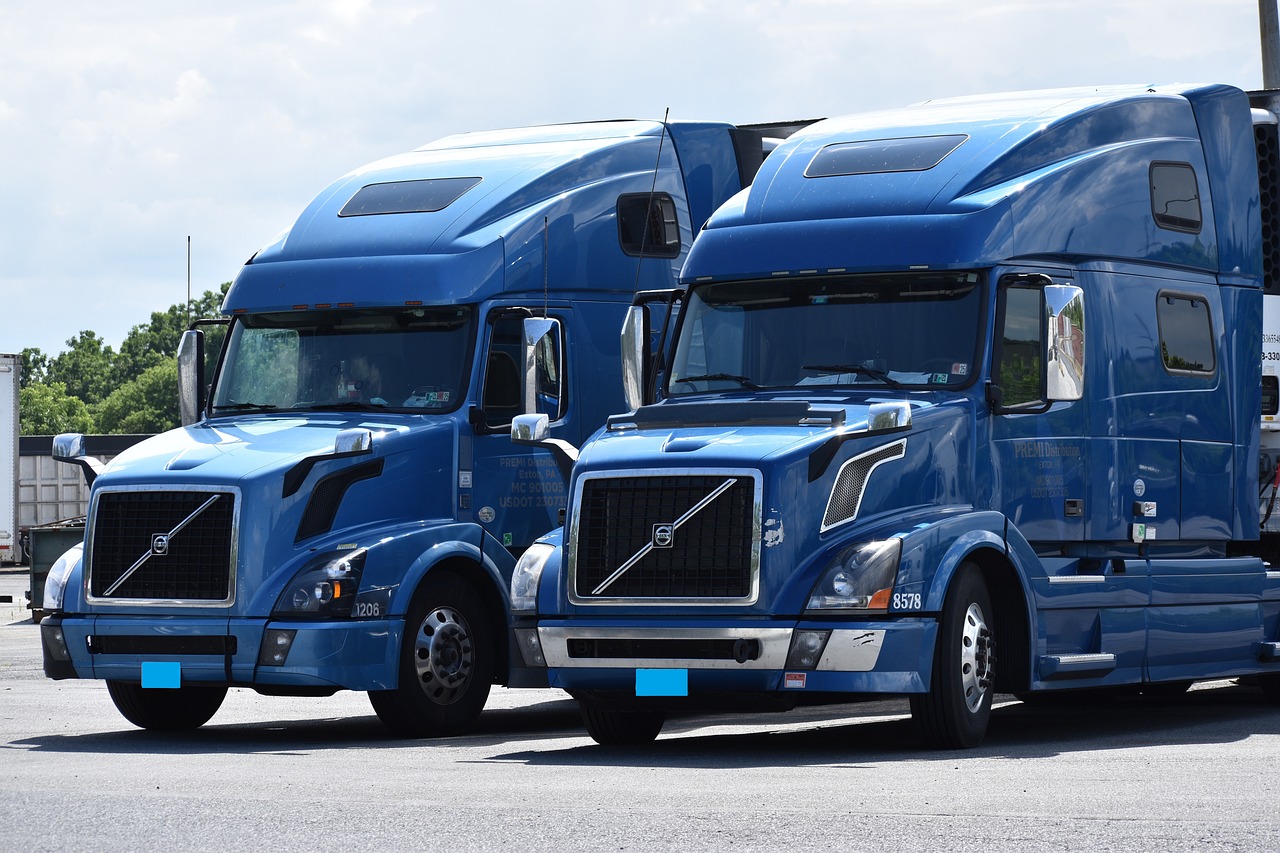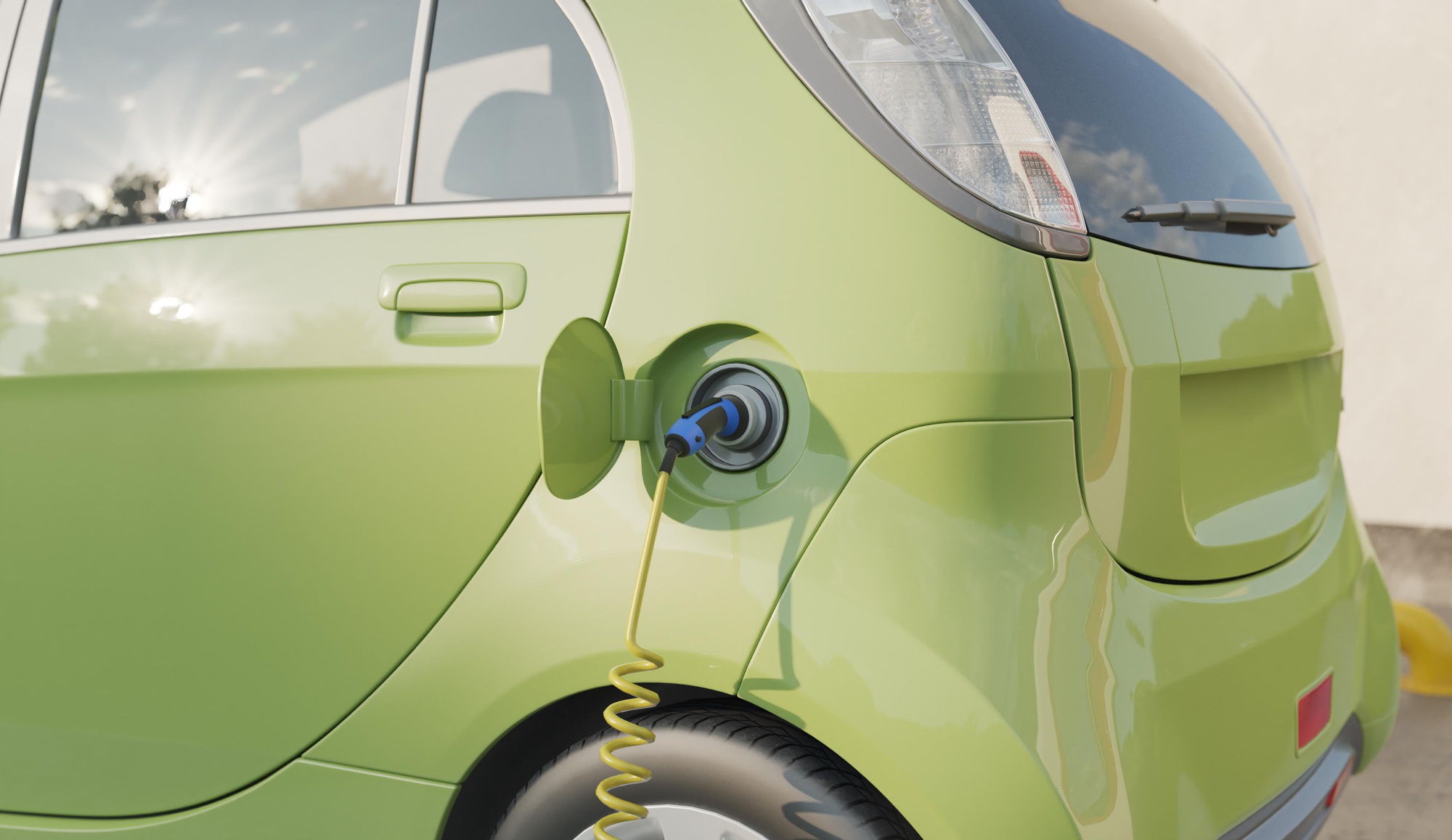To Buy or Lease: The Best Approach for Logistics Companies to Own New Energy Vehicles

The decision to buy or lease new energy vehicles has a significant impact on your logistics operations. Cash flow, fleet requirements, and long-term strategies often determine the best approach for your business. Leasing offers flexibility, allowing you to scale your fleet without large upfront costs or risks tied to depreciation. Many companies prefer this option as it enables regular upgrades to newer, more efficient models. On the other hand, buying provides ownership and potential savings through reduced fuel and maintenance costs. For example, a new truck can save $2,500 annually on fuel and $7,600 on maintenance compared to older models.
Key Takeaways
Buying new energy vehicles (NEVs) means you fully own them.
You can customize and control your vehicles as you like.
Leasing NEVs helps save money by lowering upfront payments.
This lets you spend money on other important business needs.
Think about the total cost of ownership (TCO) when choosing.
Buying might cost more now but save money over time.
Leasing makes it easy to adjust your fleet size as needed.
It works well for businesses with changing or seasonal needs.
Tax breaks and depreciation make buying NEVs a smart choice.
These benefits can help your company save more in the future.
The Best Approach: Benefits of Buying New Energy Vehicles

Ownership and Asset Control
When you buy new energy vehicles (NEVs), you gain full ownership of your fleet. This gives you complete control over how the vehicles are used, maintained, and upgraded. Unlike leasing, ownership allows you to customize your vehicles to meet specific operational needs without restrictions.
Owning NEVs also provides significant financial benefits. Electric trucks, for example, offer substantial savings on fuel and maintenance. These savings can offset the initial investment within a few years. You could save thousands of dollars annually on fuel costs because electricity is cheaper than diesel.
Scenario | Market Share | Industry Output (CNY) |
|---|---|---|
Baseline | 48.17% | 60.015 billion |
High-speed Electrification | 75.29% | 306.087 billion |
The table above highlights the growing market share and economic output of electrification. By owning NEVs, you position your company to benefit from this expanding market while maintaining control over your assets.
Tax Incentives and Depreciation Benefits
Purchasing NEVs can also provide you with valuable tax incentives. Governments worldwide are extending tax exemptions for NEVs to encourage adoption. For instance, extending these exemptions until 2035 could lead to an increase in NEV sales by 7 million units. These incentives reduce the upfront cost of purchasing NEVs, making them more affordable for logistics companies like yours.
Depreciation benefits further enhance the financial appeal of buying NEVs. As a business owner, you can claim depreciation on your vehicles, reducing your taxable income. This not only lowers your tax liability but also helps you recover a portion of your investment over time. While phasing out tax exemptions could promote infrastructure financing, the current incentives make buying NEVs a cost-effective choice for many logistics companies.
Long-Term Cost Savings
Buying NEVs offers significant long-term cost savings. Although the initial purchase price may seem high, the total cost of ownership (TCO) often proves more economical over time. Charging an electric vehicle is typically cheaper than refueling a diesel truck. Maintenance costs are also lower because electric motors have fewer moving parts compared to internal combustion engines.
Studies on TCO show that while electric vehicles may have higher upfront costs, they can save money in the long run. These savings depend on factors like driving habits and local electricity rates. For logistics companies with high mileage patterns, the cost benefits of NEVs become even more pronounced. By investing in NEVs, you can reduce operational expenses and improve your bottom line over the years.
Building Equity in Fleet Assets
Owning new energy vehicles (NEVs) allows you to build equity in your fleet over time. Unlike leasing, where you pay for the use of vehicles without gaining ownership, purchasing NEVs turns your fleet into a valuable asset. This ownership can strengthen your company’s financial position and provide long-term benefits.
When you buy NEVs, the vehicles become part of your company’s balance sheet. These assets can increase your business's net worth, making it easier to secure financing for future growth. For example, owning a fleet of electric trucks can serve as collateral for loans or investments. This financial flexibility can help you expand operations or invest in other areas of your business.
Tip: Building equity in your fleet can also protect your company during economic downturns. Owned assets provide a safety net, offering options like selling or refinancing vehicles to manage cash flow.
Additionally, owning NEVs ensures that your investment appreciates in value as the market for sustainable logistics grows. The demand for eco-friendly transportation solutions is rising, and companies with established NEV fleets are better positioned to capitalize on this trend. By choosing the best approach for your business, you can align your fleet strategy with long-term industry shifts.
Another advantage of building equity is the potential for resale value. Electric vehicles often retain their value better than traditional diesel trucks due to lower maintenance costs and increasing demand. If you decide to upgrade your fleet in the future, selling your current NEVs can offset the cost of new purchases. This creates a cycle of reinvestment that supports your company’s growth.
The Best Approach: Benefits of Leasing New Energy Vehicles

Improved Cash Flow and Lower Upfront Costs
Leasing new energy vehicles (NEVs) can significantly improve your cash flow by reducing the financial burden of upfront costs. Instead of paying the full purchase price, you only need to cover a smaller initial payment and manageable monthly fees. This approach allows you to allocate your capital to other critical areas of your logistics business, such as technology upgrades or expanding operations.
Leasing also helps you save on operational expenses. For example:
A national logistics company managing 500 leased trucks saved $500,000 annually on fuel costs. They also reduced delivery times by 20% using AI-powered fleet tracking.
A regional provider saved $1 million over three years by analyzing its leased electric vans. Renewing leases on 30% of the fleet proved more cost-effective than acquiring new vehicles.
These examples highlight how leasing can optimize your budget while maintaining efficiency. By choosing this option, you can focus on growing your business without the financial strain of vehicle ownership.
Flexibility to Scale Fleet Size
Leasing offers unmatched flexibility when it comes to scaling your fleet. As your logistics needs change, you can easily adjust the size of your fleet without committing to long-term ownership. This adaptability is especially useful during peak seasons or when entering new markets.
Short-term leasing agreements allow you to test different fleet sizes and configurations. If your business experiences a sudden increase in demand, you can quickly add vehicles to your fleet. Conversely, during slower periods, you can reduce the number of leased vehicles to avoid unnecessary costs. This flexibility ensures that your fleet remains aligned with your operational needs, helping you maintain profitability.
Tip: Leasing is an excellent way to experiment with fleet expansion strategies without the financial risks of purchasing vehicles outright.
Access to the Latest Technology and Models
Leasing provides a cost-effective way to access the latest advancements in electric vehicle (EV) technology. With shorter lease terms, typically ranging from 24 to 36 months, you can upgrade to newer models as technology evolves. This ensures that your fleet stays competitive and benefits from improved efficiency and performance.
Leasing also allows you to try different EV models before committing to ownership. This low-risk approach helps you identify the best vehicles for your specific needs. Additionally, newer leased models often meet stricter emissions standards, resulting in lower carbon dioxide emissions and reduced environmental impact.
Other advantages of leasing include:
Access to advanced EV technology without long-term commitments.
Lower maintenance and fuel costs due to the use of modern, fuel-efficient vehicles.
By leasing, you can stay ahead of industry trends and maintain a fleet equipped with cutting-edge technology. This approach not only enhances your operational efficiency but also positions your company as a leader in sustainable logistics.
Reduced Risk of Depreciation
Leasing new energy vehicles (NEVs) shields your logistics company from the financial risks tied to depreciation. Vehicle depreciation occurs when the value of a truck or van decreases over time due to wear, technological advancements, or market changes. When you lease, you avoid owning an asset that loses value, allowing you to focus on operations without worrying about resale prices.
Leasing contracts are designed to adapt to uncertainties like fluctuating fuel costs and evolving technology. This flexibility ensures that your fleet remains cost-effective even when external factors change. For example, electric vehicle technology improves rapidly, and leasing lets you upgrade to newer models without being stuck with outdated assets.
Key Findings | Implications for Logistics Companies |
|---|---|
Flexible lease contracts can adapt to technological changes and fuel price uncertainties. | Reduces the risk of depreciation associated with traditional vehicles. |
The model incorporates various uncertainties (CO2 prices, fuel prices, etc.). | Helps in making informed decisions about fleet management and technology adoption. |
By leasing, you avoid the financial burden of owning vehicles that may depreciate faster due to unpredictable factors like CO2 pricing or fuel market volatility. This approach helps you make smarter decisions about fleet management while staying ahead of industry trends.
Tip: Leasing NEVs allows you to focus on operational efficiency rather than worrying about asset value. This strategy ensures your fleet remains competitive and financially sustainable.
Leasing also simplifies fleet upgrades. When your lease term ends, you can easily transition to newer models with better performance and lower emissions. This keeps your fleet aligned with regulatory standards and customer expectations. By choosing leasing, you reduce depreciation risks and gain the flexibility to adapt to a rapidly changing logistics landscape.
Key Considerations for Choosing the Best Approach
Total Cost of Ownership (TCO)
Understanding the total cost of ownership (TCO) is essential when deciding whether to buy or lease new energy vehicles (NEVs). TCO includes all expenses associated with owning or leasing a vehicle over its lifecycle. These costs go beyond the initial purchase or lease price and include fuel, maintenance, insurance, depreciation, and more.
Cost Component | Description |
|---|---|
Fuel costs | Ongoing expenses influenced by vehicle type and usage patterns. |
Maintenance and repairs | Regular upkeep and unexpected repairs that can add significantly to overall costs. |
Insurance | Protects against potential losses due to accidents or theft. |
Depreciation | The loss in value of a vehicle over time, crucial for resale considerations. |
Licensing and registration fees | Mandatory legal costs that vary by vehicle and location. |
Downtime costs | Hidden costs when a vehicle is not operational, affecting profitability. |
Resale value | Expected return from selling the vehicle at the end of its useful life. |
For logistics companies, TCO analysis helps you evaluate the financial implications of each option. Leasing may reduce upfront costs, but buying often proves more economical in the long run due to lower fuel and maintenance expenses. Carefully assessing these factors ensures you choose the best approach for your business.
Regulatory Compliance and Incentives
Government regulations and incentives play a significant role in your decision-making process. Many countries offer subsidies and tax breaks to encourage NEV adoption. For example, subsidies have driven 40% of battery electric vehicle (BEV) registrations and 25% of plug-in hybrid electric vehicle (PHEV) registrations. These incentives lower acquisition costs, making NEVs more accessible for logistics companies.
Metric | Value |
|---|---|
Subsidy-induced BEV registrations | 40% |
Subsidy-induced PHEV registrations | 25% |
Implied abatement cost for BEVs | 870 euro per ton CO₂ |
Implied abatement cost for PHEVs | 2,470 euro per ton CO₂ |
Social factors also influence NEV adoption. Green peer influence and pressure from social groups can increase awareness of environmental benefits. By aligning your fleet strategy with regulatory incentives and social trends, you can enhance your company’s sustainability efforts while reducing costs.
Charging Infrastructure and Operational Feasibility
The availability of charging infrastructure directly impacts the operational feasibility of NEVs. Strategically placed charging stations at warehouses and distribution centers simplify logistics operations. Aligning infrastructure planning with your business needs ensures smooth integration of NEVs into your fleet.
Different layout strategies for charging stations can affect operational costs. Research shows that a random layout strategy is the most cost-effective compared to conservative or radical approaches. Additionally, pricing schemes for charging services influence fleet efficiency. A well-planned charging network reduces downtime and operational expenses, making NEVs a practical choice for logistics companies.
Tip: Evaluate your current infrastructure and identify key locations for charging stations to optimize your fleet’s performance.
Fleet Utilization and Mileage Patterns
Understanding how your fleet operates is critical when deciding whether to buy or lease new energy vehicles (NEVs). High-mileage patterns often favor ownership because the cost per mile decreases over time. When you own a vehicle, the more you use it, the more value you extract from your investment. For logistics companies with consistent, long-distance routes, buying NEVs can lead to significant savings in fuel and maintenance costs.
Leasing, on the other hand, works well for fleets with unpredictable or seasonal usage. If your mileage varies throughout the year, leasing allows you to avoid penalties for exceeding mileage limits. It also provides flexibility to adjust your fleet size based on demand. For example, during peak seasons, you can lease additional vehicles without committing to long-term ownership.
Tip: Analyze your fleet's mileage data to determine which approach aligns with your operational patterns. High-mileage fleets may benefit from ownership, while variable usage often suits leasing.
Mileage also impacts the wear and tear on vehicles. NEVs typically have lower maintenance needs, but high usage can still lead to faster depreciation. Leasing shields you from this risk, as the leasing company absorbs the depreciation costs. By understanding your fleet's utilization patterns, you can make a decision that optimizes both cost and efficiency.
Maintenance and Warranty Coverage
Maintenance plays a vital role in keeping your fleet operational and cost-effective. Regular upkeep ensures vehicle health and reduces the risk of unexpected breakdowns. According to Tom Gieseking, Vice President of Fleet Operations for Enterprise Fleet Management, maintenance has become increasingly important as companies keep vehicles in service longer. For NEVs, proactive maintenance strategies help you avoid costly repairs and downtime.
Older vehicles often require more frequent and expensive repairs. Replacing them with newer models improves reliability and efficiency. This approach minimizes maintenance expenses and ensures your fleet operates smoothly. For logistics companies, downtime can disrupt schedules and impact customer satisfaction. By investing in newer NEVs, you reduce these risks and maintain consistent operations.
Leasing offers an advantage in this area. Most lease agreements include warranty coverage, which lowers your out-of-pocket maintenance costs. If a leased vehicle requires repairs, the warranty often covers the expenses, saving you money. Ownership, however, places the responsibility for maintenance entirely on you. While this gives you control, it also increases your financial risk if major repairs are needed.
Note: Consider the warranty terms when evaluating leasing options. Comprehensive coverage can significantly reduce your fleet's maintenance costs.
Proactive maintenance not only extends the lifespan of your vehicles but also optimizes your financial resources. Whether you choose to buy or lease, prioritizing maintenance ensures your fleet remains reliable and cost-efficient.
Choosing between buying and leasing new energy vehicles depends on your company’s financial health, operational needs, and long-term vision. Leasing requires less upfront capital, making it ideal if you need to preserve cash flow. It also provides predictable monthly costs, often covering maintenance and repairs, which simplifies budgeting. However, leasing may cost more over time, and you won’t own the vehicles at the end of the term. Buying, on the other hand, involves a higher initial investment but can save money in the long run. Ownership builds equity in your fleet and offers greater control over assets. Carefully weigh these factors to determine the best fit for your business.
FAQ
Is leasing better for companies with seasonal demand?
Yes, leasing works well for seasonal demand. You can scale your fleet up or down based on your needs. This flexibility helps you avoid the long-term commitment of ownership and reduces costs during off-peak periods.
How does vehicle depreciation affect buying versus leasing?
When you buy, you bear the risk of depreciation, which reduces the vehicle's resale value. Leasing shifts this risk to the leasing company. This makes leasing a safer option if you want to avoid financial losses from declining vehicle value.
Can I switch to newer models easily if I lease?
Yes, leasing allows you to upgrade to newer models at the end of your lease term. This ensures your fleet stays updated with the latest technology and meets evolving industry standards without the hassle of selling older vehicles.
Tip: Leasing is ideal if you want to keep your fleet technologically advanced without long-term commitments.
See Also
A Comprehensive Overview of Eco-Friendly Supply Chain Transport
Overcoming Obstacles in Automotive Supply Chains: Professional Insights
Mastering Lean Logistics for Success in Tech Manufacturing
